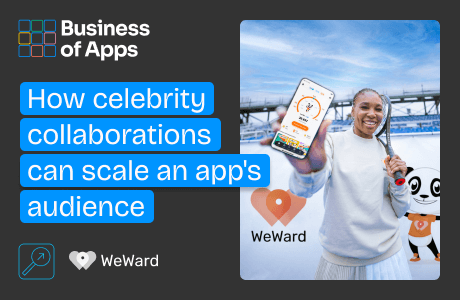“Habit-forming products often start as nice-to-haves, but once the habit is formed, they become must-haves,” says Nir Eyal, author of Hooked.
This touches on a key challenge publishers are facing: moving beyond attracting one-time web store buyers to forming loyal, repeat buyers. Building a habit loop within your store is key, especially for VIP players who contribute significantly to average revenue per user (ARPU). For many of our partners, launching a web store has led to an incremental revenue increase of 25–35%—a testament to the financial impact of building these long-term player habits.
But when done right, a habit loop doesn’t just increase revenue; it boosts player engagement and satisfaction, creating a fun experience that they choose repeatedly. Let’s look at how publishers can build these habits by guiding players through each critical stage of the web store journey.
First visit: Setting the stage for engagement
You only get one chance at making a strong first impression. Your goal is to ensure players are aware of your web store and, further, understand it has unique benefits that are worth checking out with a visit.
To do this, you should lean upon your online communities. Games often have their own Instagram, Facebook, X, or TikTok, but we’ve also increasingly seen the benefits of communities on Reddit and Discord. These platforms provide places for users to forge community, create friendships, seek quick tips and tricks, and find the best insider news. Therefore, they make the best place to promote your web store’s deals and showcase its unique store benefits, from exclusive items to better value on purchases when compared to in-app purchases.
It’s important to play an active role in these channels, especially with VIP players. VIP account management is key, and account managers should be reaching out directly to VIP players to offer exclusive deals and spark interest for first-time web store visits. Keep in mind the “trigger” stage of habit formation focuses on capturing attention. By creating strategic, well-timed triggers through social channels or VIP outreach, publishers can provide an initial nudge that brings players into the store, setting the foundation for a new buying habit.
Repeated visit: Building FOMO and desire to return
So you’ve raised awareness for your web store, and there’s been a spike in first-time visits. Now what? Your next goal is to encourage second and third visits with more “triggers”. According to our data at Appcharge, most first-time deposits occur after 2 to 3 visits.
To drive repeat visits, continue leveraging VIP account management and social media to drive home the value of the web store, offering time-limited and unique offers. These create urgency and excitement, or, as some would say, drive the classic “FOMO” (fear of missing out). Further, to build a desire to return, consider gamification in your web store, such as daily bonuses or offer wheels. By showing players the exciting content and offers available with each visit, you can increase retention and help form a habit of returning to the web store.
According to our data, a daily bonus is helpful, but the types of daily bonuses you offer are most crucial. Variable rewards are key to forming habits since they tap into player curiosity and desire for variety. Encourage players to check back often by offering both varied daily bonuses and limited-time deals with different artwork. By doing this, you’ll successfully create a loop of regular engagement.
Fire Up Your Growth!
Moburst propelled leading brands like Google, Reddit, and Uber to the next level. Let’s ignite your Success journey today!
Claim Your FREE Growth Fuel!First purchase: The conversion catalyst
Your players are aware of your store, and you’ve not only gotten them to check it out for the first time, but they’ve visited a few times and are intrigued. How do we turn the curious web store browser into a web store purchaser?
To convert repeat visitors into buyers, use unique, time-limited welcome offers that stand out from in-game options. Note that the offer itself isn’t enough – its presentation is also key. Make sure it’s inviting, familiar, and on-brand using tailored game artwork and eye catching designs.
In addition to the welcome offer, make sure your web store UI is user-friendly. Remember, this stage is all about encouraging curious web store shoppers to take action and make a purchase. You’ll need to remove friction to achieve this goal and ensure the experience is both pleasant and enticing. For this “action” stage, make it easy for players to take the first step. Easy login is crucial, so offer a variety of login methods including One Time Password. Design-wise, don’t stuff the page with information – focus on removing distractions.
Repeat purchase: Forming the habit loop
Congratulations! You’ve gotten your player to make their first purchase. Will they now ignore the convenience of in-app purchases and shop predominantly on your web store moving forward?
Not yet. There’s more work to do to make your web store a “must-have” in the eyes of your players. Our publisher partners see 80-100% of purchases on any given day coming from repeat purchasers—the secret lies in creating a seamless experience that keeps players returning to your web store when the next trigger appears. How is that done?
First, remember that this is the “investment” stage of Eyal’s framework. When players feel they’ve invested in their store experience, they’re more likely to become long-term customers. Give players a sense of progress or status to strengthen their commitment to the web store.
A key tactic here is empowering your VIP account managers to provide personalized, exclusive deals to VIP players regularly. This creates a frequent sense of value and exclusivity in the web store and strengthens the relationship with your VIP players.
Additionally, continue delighting players with engaging web store mechanics such as loyalty programs or accumulation bars, allowing them to see a reward path that makes returning and purchasing more appealing.
Final thoughts
72% of top-grossing mobile games are leveraging web stores. DTC has become a key part of the successful game’s monetization playbook, but you can’t simply create one and hope for the best. Help players form habits by going beyond raising awareness for a store or getting a single transaction. By implementing this strategy and focusing on the four key milestones—trigger, action, variable reward, and investment—publishers can delight players and create a strong, self-sustaining habit loop that draws them back to the store time and again.














